To those who like their spaghetti white and their carrots orange, it can be a scary looking thing, but tagliatelle dyed with squid ink is nothing to fear. Typical of various regions of Italy and Spain, squid ink is used to give pasta and risotto dishes a mildly salty flavour with hints of the sea. Most notable, though, is the deep black colour that it imparts. The colour of the tagliatelle is a dead giveaway that there is squid ink, however in this recipe the flavour of the ink is not overly pungent, if at all noticeable, due to the masking flavours of the other ingredients.
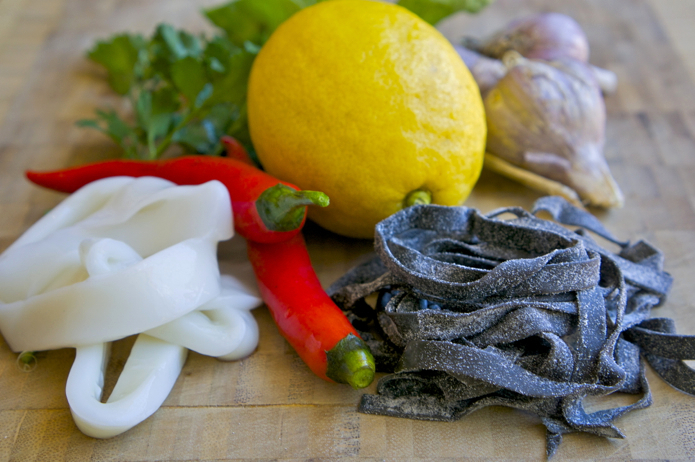
The ingredients for this dish are all so fresh and vibrant. Calamari, basil, parsley, garlic, lemon and fresh chili.
The ink produced by squid, and more generally other members of the cephalopod family, is used naturally as a defensive escape mechanism. It is believed that the ink is used by these creatures of the sea in two ways–as a means of creating a “smokescreen” to obscure a predator’s vision, and in creating a pseudomorph, a squid-sized blob of ink that can trick the predator while the squid makes a crafty escape.
This dish uses the squid ink in the pasta dough, which is then made into tagliatelle, or long ribbon-like pasta. Although not a product typically stocked by supermarkets (at least not in Perth), squid ink can generally be found in sachets in some gourmet food shops. The alternative is to source it from a fishmonger that stocks fresh squid, from which the ink sacs can be removed and the ink squeezed out.
Making the pasta dough is not any different to any ordinary dough, except for the addition of a small amount of the ink. I prefer an enriched dough recipe that uses additional egg yolks, however the standard 100g flour per whole egg can be just as easily used. In making the dough, I find it best to refrain from using all of the flour at the start, because the exact quanity of flour required will differ depending on the water content of the eggs. I generally start with about 80% of the flour and then slowly add more while I am kneading, if the dough feels too sticky. I then use a pasta machine to roll and cut the dough, however it can be done with a rolling pin and knife (although it won’t be as easy).
A lot of people will say that cheeses should never be added to pasta dishes of seafood, however I still like to add just a little bit at the end. Nothing overly pungent like Pecorino Romano, however a small amount of something like Parmigiano Reggiano gives the dish a nice extra flavour.
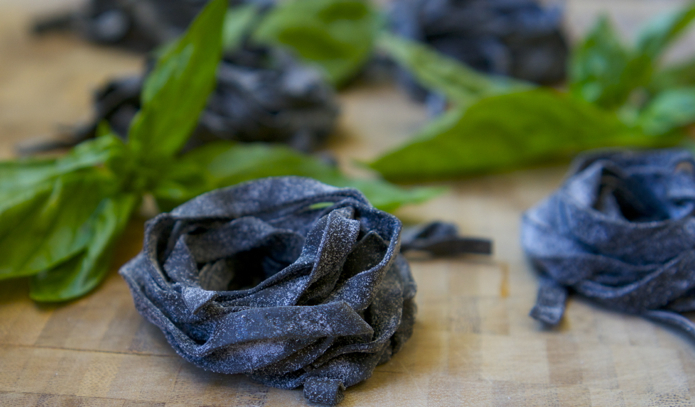
Ingredients (serves 3 to 5)
Pasta Dough
- 300g flour
- 2 whole eggs
- 2 egg yolks
- Pinch of salt
- About 1 tsp of squid ink
Calamari
- 2 cups flat leaf parsley leaves
- 2 cups basil leaves
- 1 tablespoon chopped red chili
- 2 cups white wine
- 1 cup water
- 500g squid
- 3 cloves finely chopped garlic
- 1/4 cup extra virgin olive oil
- About 2 tsp of fresh lemon juice
Preparation
Making the squid ink pasta
- Dump the flour onto a clean work surface and make a well in the middle of the pile.
- Add the egg yolks, the whole eggs, the ink and a pinch of salt to the well, being careful not to rupture the its walls.
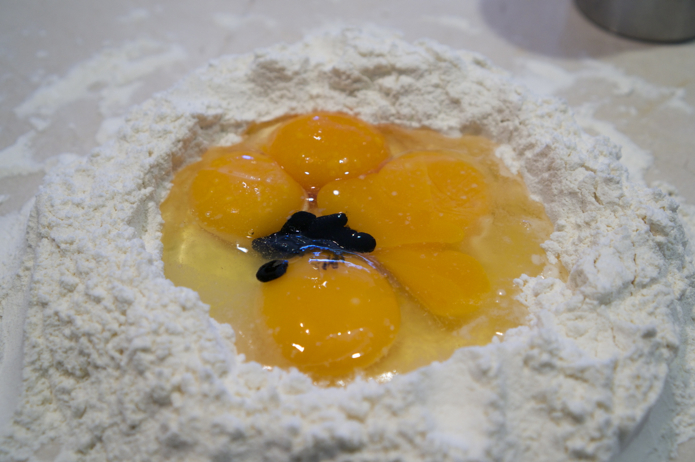
Looks like somebodies pen is leaking
- Being very careful not to make a mess, slowly beat the eggs with a fork. The mixture will slowly thicken as you incorporate more flour.
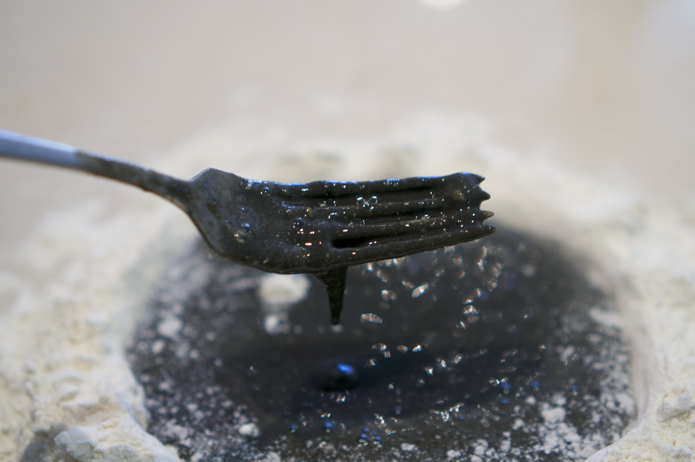
The mixture will slowly become more viscous
- Once the flour and liquid have been fully incorporated, knead the dough thoroughly for 5-10 minutes. Add additional flour if the dough is sticky – it should form a smooth dough that does not stick to the surface. Lightly flour the dough and cover with cling-wrap or place into an air-tight container. Rest the dough for at least an hour on the bench top.
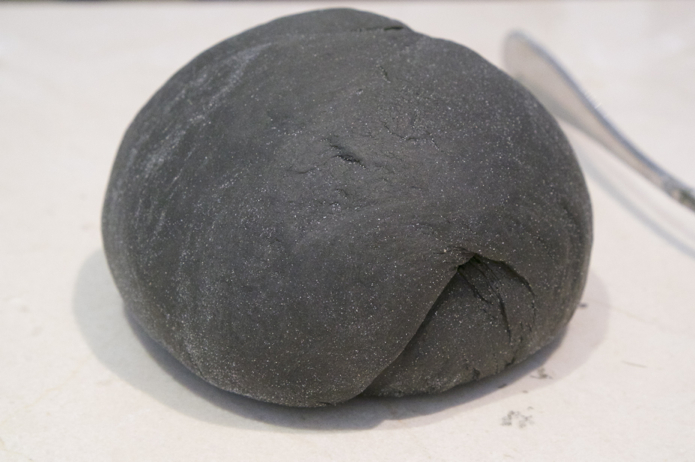
The dough should not be sticky. It needs to rest for about an hour.
- Once rested, cut the dough into four evenly sized portions. Starting with one of the portions, roll the dough into a sheet using the widest setting of the pasta machine. Fold the dough in half and then roll again. Repeat 6 or 7 times, ensuring that the pasta is well laminated.
- Continue rolling the dough, using thinner machine settings each time. Stop at the desired thickness (I use number 5 on my Atlas machine). Lightly dust the sheets with flour and let it rest, uncovered, on a clean surface.
- Follow the same steps to roll the remaining three portions of dough. Between each portion turn over each already-rolled sheet of pasta to ensure even drying of both sides. The drying helps stop the tagliatelle from sticking together later.
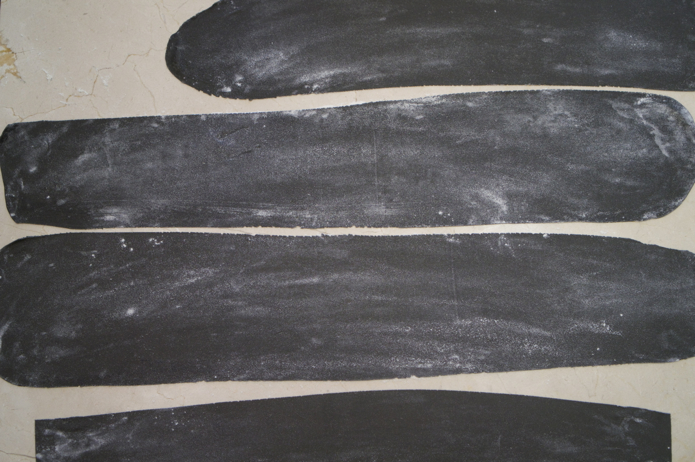
Sheets of the pasta after being rolled and lightly dusted with flour
- If the sheets are too long they can be cut in half. Take each sheet and either hand cut into ribbons, or feed through the tagliatelle or linguine attachment of the pasta machine. If the tagliatelle are sticking together then lightly dust with flour. If using within an hour or two they can be kept at room temperature, otherwise refrigerate or freeze them for later.
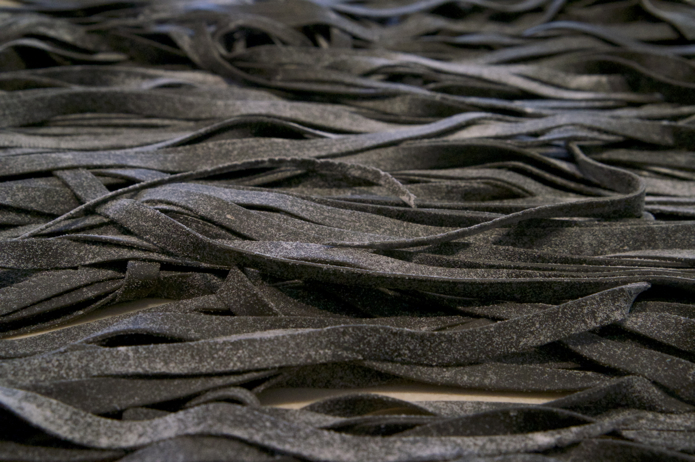
Lots and lots of ribbons of squid ink tagliatelle!
Braising the calamari
- If whole, cut the squid into rings of thickness 1 cm.
- In a large frying pan, gently fry 1 clove of chopped garlic in the olive oil. Add the squid and season with salt.
- Add the water and wine, ensuring that the squid is completely submerged. Bring to a boil and then allow to simmer, covered, for about 40-50 minutes, or until the squid is tender.
Assembling the dish
- Bring a pot of generously salted water to the boil. This will be used to cook the pasta.
- Gently fry the remaining garlic and the chopped red chili in some olive oil. Be sure not to burn the garlic. Season with freshly ground black pepper.
- Add a splash of white wine. Once the wine has mostly evaporated, reduce the heat to low and add the calamari to the pan, followed by the parsley and basil. Toss gently so that the calamari is well coated in the herbs, oil and garlic.
- Add the pasta to the boiling water. It should take only a few minutes to cook. Once ready (the best way to tell is by tasting it), add the pasta, along with a little bit of the water in which it was cooked, to the frying pan with the squid. Gently toss until the water and oil have coated the pasta well.
- Season with a squeeze of lemon juice. If desired, stir through a small amount of grated Parmesan cheese.
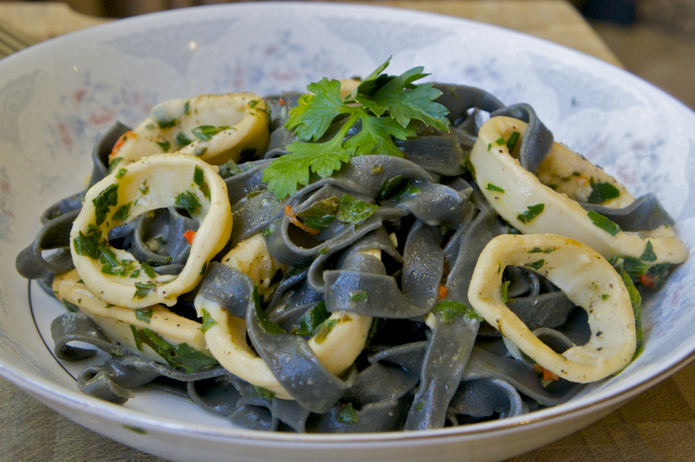
Buon appetito!
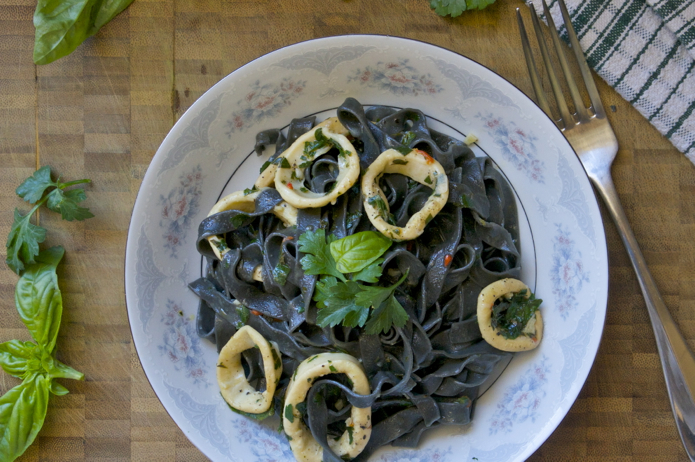
Wow..interesting! First time I see black colour of spaghetti.
Good job, Dan! 😀
Yea I think a lot of people won’t have seen or tasted it before. Definitely one of the more peculiar dishes to come from Italy 🙂